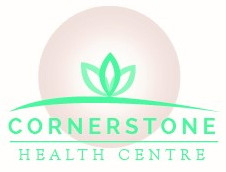Comparison Of Georgetown Back Pain Relief Via Opioid Or Spinal Manipulation
“What should I do about my back pain? It’s been going on for so long.”
COSTS OF OPIOID VS SMT FOR CHRONIC LOW BACK PAIN MEDICARE PATIENTS
Chronic low back pain is a costly condition, but just how costly is it? A review of Medicare health spendings for long-term care of chronic low back pain assessed the costs of opioid analgesic treatment versus those for spinal manipulation therapy. There were 28,160 participants aged 65-84 years old. 77% started with opioid therapy for their chronic low back pain. 23% began with SMT. The long-term costs for opioid-therapy patients were 58% lower, but long-term overall healthcare expenses were 1.87 times higher for those same opioid patients. (1) Dr. Butwell follows a system of Georgetown chiropractic treatment frequency steered by the 50% Rule looking for 50% relief of pain within a month with more visits in the beginning and fewer as the pain reduces.
SAFETY OF OPIOIDS VS SMT FOR CHRONIC LOW BACK PAIN MEDICARE PATIENTS
Cost is one thing. What about safety? An analysis of patient files of Medicare beneficiaries aged 65 to 84 with chronic low back pain for 5 years looked at the long-term safety of two common treatment options for chronic low back pain: opioid analgesic therapy and spinal manipulation therapy. The researchers considered a variety of patient records: patients who only underwent spinal manipulation, only took opioids, started with opioids then had spinal manipulation, and began with spinal manipulation then supplemented with opioids. What did they discover? The risk of adverse drug events was substantially higher – 42 times higher - for patients who started with opioid therapy initially for their chronic back pain than those who started with spinal manipulation. (2) Dr. Butwell uses the well research-documented, safe, gentle protocols of Cox® Technic.
ESCALATION OF CARE RISK FOR CHRONIC LOW BACK PAIN MEDICARE PATIENTS
Research documents another important factor in back pain treatment: how well does a treatment help the patient avoid more complex treatment? A third review of Medicare patient data studied the risk of escalated treatments – hospital stays, emergency room visits, imaging, back surgery, pain med interventions, and other types of encounters for potential complications of chronic low back pain – in long-term chronic low back pain care patients who started with opioid analgesic therapy or spinal manipulation therapy. Starting care with spinal manipulation therapy was associated with reduced rates of escalation of care. The rate of escalated care encounters was 2.5 times higher for opioid treatment patients. (3) The use of Cox® Technic at Dr. Butwell lessens the requirement for escalated care while cautiously monitoring each patient for indications that such may be helpful or needed.
CONTACT Dr. Butwell
Listen to this PODCAST with Dr. Nike Taylor on The Back Doctors Podcast with Dr. Michael Johnson as she discusses treatment of chronic low back pain via the Cox® Technic Flexion Distraction System of Spinal Pain Management.
Set up your Georgetown chiropractic appointment today. Whether the response to the question of “what should I do about my back pain?” was opioid treatment or other care, spinal manipulation at Dr. Butwell may well be your next (or your initial if you are just beginning the search for help) treatment that will get you the back pain relief you are seeking in a cost-effective, safe way.

